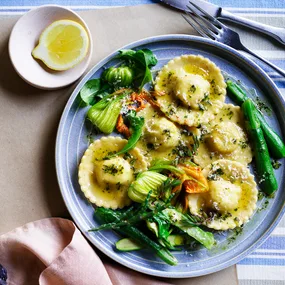One grape, many names. You can find it in the warmer parts of Spain, where it’s known as monastrell; you can find it planted across the south of France, in the Rhône Valley, where it is known as mourvèdre and is often blended with syrah, grenache, carignan and other robust red grapes; and in Provence, where it’s the grape responsible for the amazing, deep red wines of Bandol.
And you can find it in Australia, where it has been grown in warmer regions such as the Barossa, Clare and McLaren Vale, and has been known as mataró for well over a century. Wherever it’s grown, monastrell/mourvèdre/mataró is notable for being a late-ripening, high-acid, tannic grape. As a result, wines made from this variety are often dark-coloured, sturdy, full-bodied and earthy, sometimes with surprising complexity, floral aromas and a herbal, vegetal edge to the savoury finish – all attributes that make it a wonderful variety to pair with gutsy meat dishes such as these roast snags with buttery, comforting golden polenta.
Many Australian winemakers in the late 19th and early 20th centuries held mataró in high regard. After falling out of fashion in recent decades, it’s now experiencing a revival, with a number of local growers producing some seriously good examples.
You say monastrell, we say mataró. Whatever you call it, it goes down well with roast snags and buttery polenta.
Ingredients
Method
Main
Drink suggestion by Max Allen
Notes










